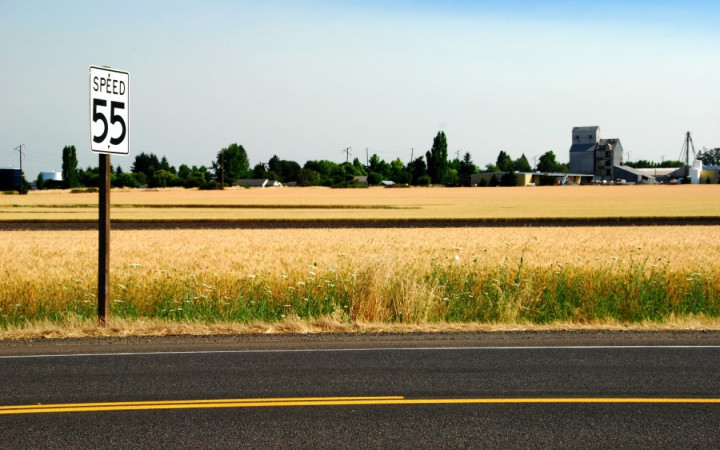Today’s Wonder of the Day was inspired by Christopher from Houston, TX. Christopher Wonders, “Why are there speed limits?” Thanks for WONDERing with us, Christopher!
Do you yearn for the day when you're old enough to get your driver's license? If you're like most kids, you're probably looking forward to the day when you'll have the freedom to drive yourself wherever you need to go rather than relying on friends and family members to chauffeur you around.
Once you have your driver's license, a whole new world will be open to explore. When the final school bell rings, you'll be able to run to the parking lot, slip behind the wheel of your sports car, hit the highway, and soon be zooming along at 100 miles per hour!
If you're thinking that doesn't quite sound realistic, you're right. Most kids don't have sports cars, and you certainly won't be zooming along at 100 mph unless you want a trip to jail! Thanks to speed limits, drivers can't simply drive as fast as they want.
Speed limits establish the maximum speed that automobiles can legally travel on a particular road. In general, speed limits are lower on city streets and higher on highways. The highest speed limits are usually reserved for rural interstate highways.
In the United States, speed limits are usually set at the state level, with the exception of speed limits on county and city roads that may be set by local authorities. These entities set speed limits after considering various factors, such as maintaining public safety while allowing vehicles to move efficiently from place to place.
Historians believe the first speed limit in the United States may have been set in Boston in 1757 when the board of selectmen set the speed limit for wagons, carriages, and horses at "a walking pace" on Sundays. We've come a long way since then!
Most city streets will have speed limits between 25-35 mph. Traffic on highways is often limited to 55 mph. Rural interstates, however, may see limits of 65-75 mph. The highest speed limit in the United States is 85 mph on a 40-mile stretch of toll road in Texas.
If you want to go as fast as you want, you might need to travel to Germany or Australia. There are certain highways in those countries that have no posted speed limit. You won't necessarily find people traveling over 100 mph, though. A study of the German Autobahn found that, on average, drivers travel about 88 mph.
If you're in a hurry, speed limits can sometimes seem like they're working against you, preventing you from getting where you want to be as soon as possible. It's important to remember, though, that speed limits are meant to keep drivers and pedestrians safe.
For example, could you imagine trying to walk in a crowded downtown area if drivers were allowed to drive city streets at 70 mph or more? The dangers of such a situation should be clear. In general, studies have linked higher speeds to a higher likelihood of automobile accidents and deaths.
Despite the link between higher speeds and higher accident rates, many states have increased speed limits, especially on rural interstate highways, in recent years. Whether these increased speed limits lead to more accidents remains to be seen, although some experts believe that a greater number of accidents may not necessarily follow because of technological advances that have led to safer automobiles.





